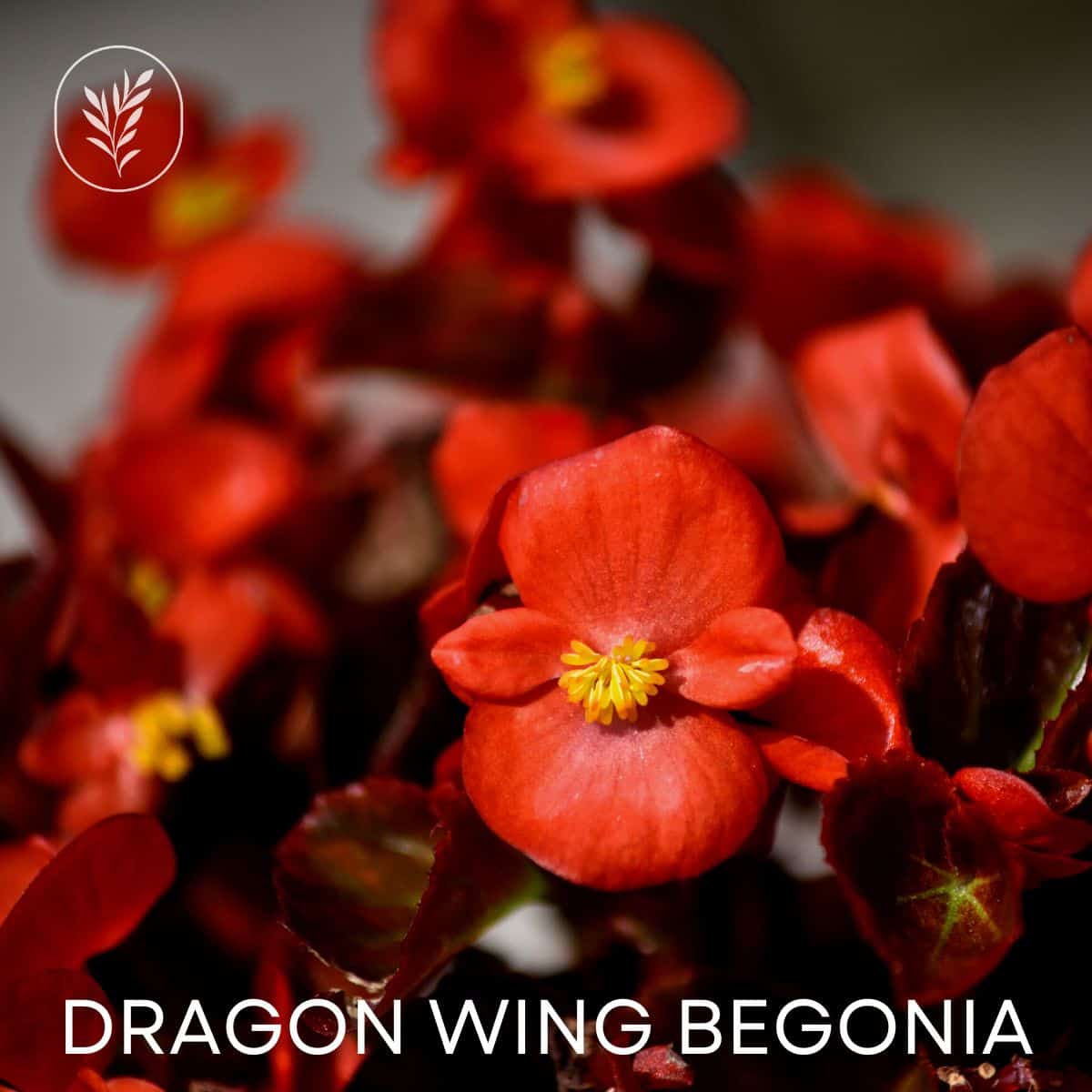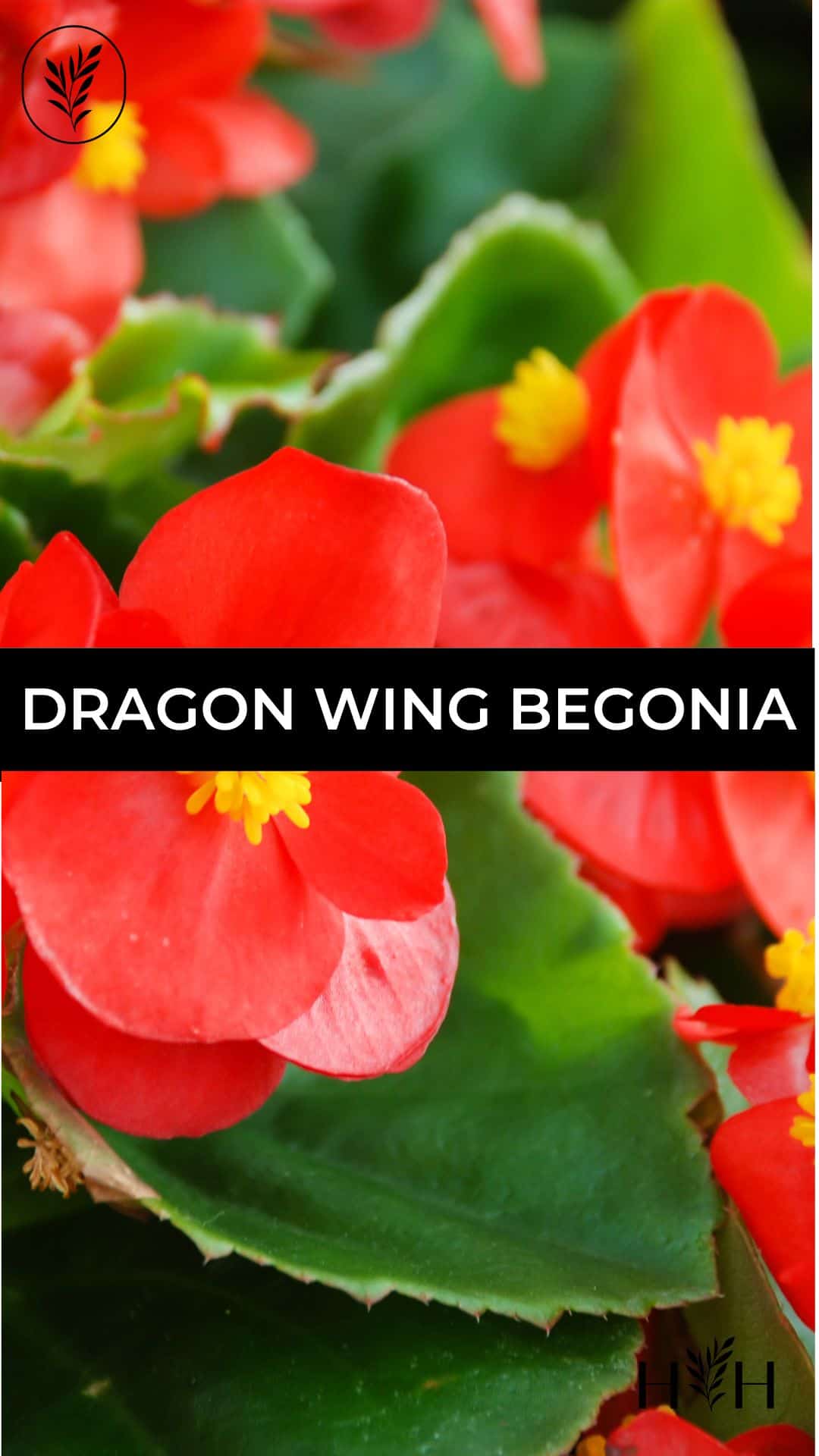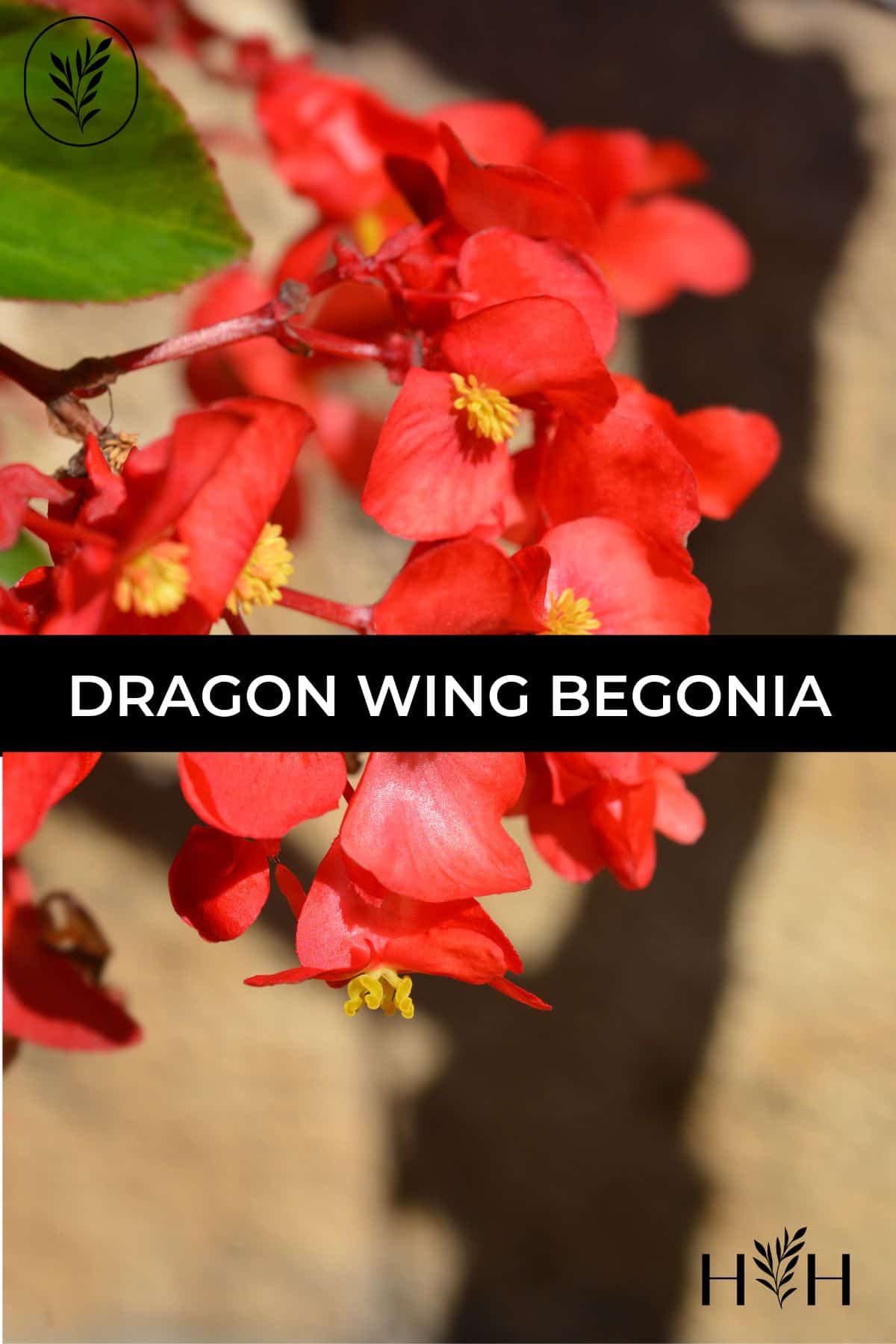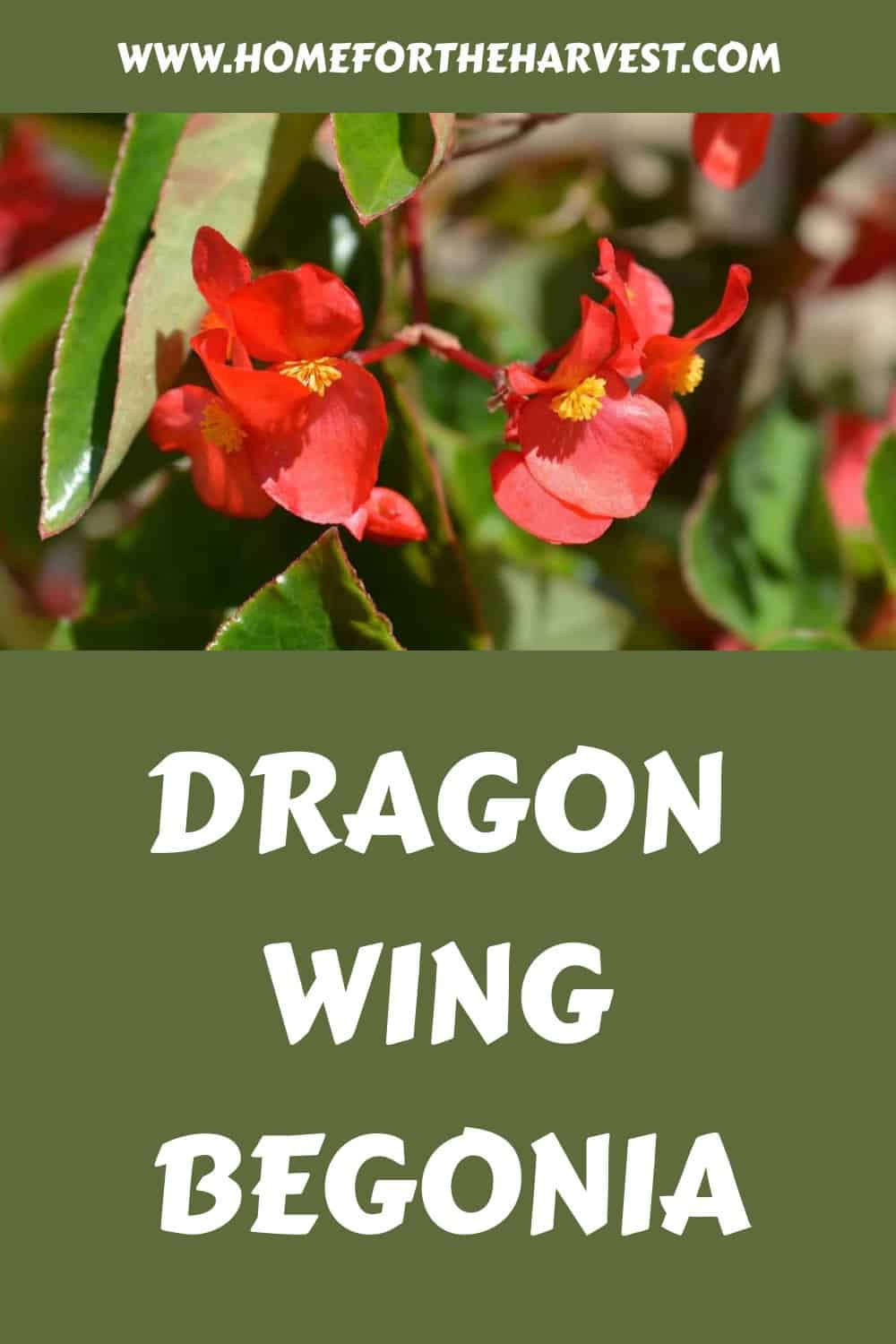Need a pretty flowering plant for a shady spot? Check out the Dragon Wing begonia!
The Dragon Wing begonia is a specialty hybrid begonia line offered by Proven Winners. Dragon Wing® begonias are varieties of Angelwing begonias. These plants grow very well in warm temperatures and are very tolerant of heat provided they have enough water and are in a partial shade to shade location. Dragon Wing begonias will overflow their containers with flowers all summer when well cared for!
Read on to learn all about Dragon Wing begonias.
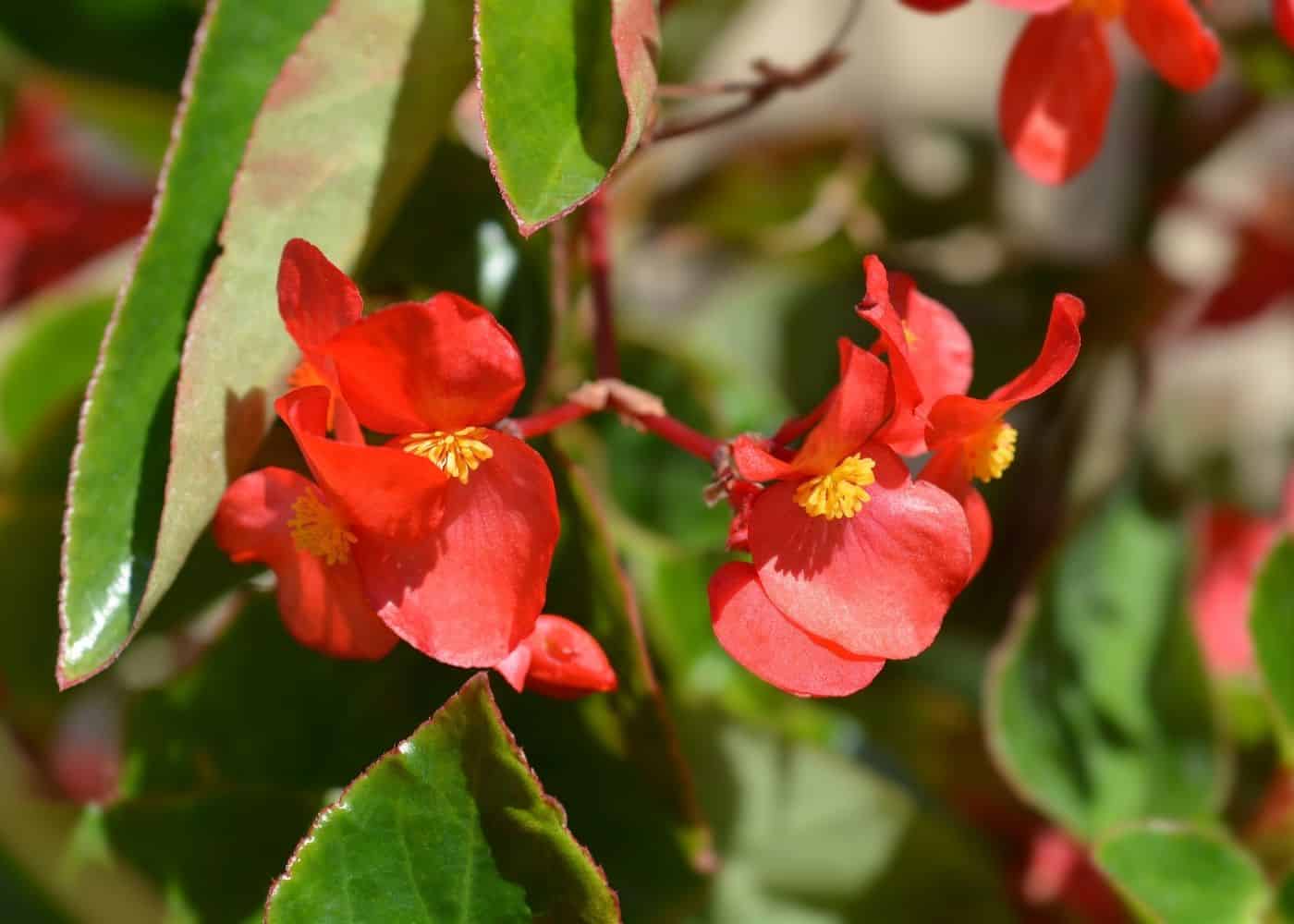
Dragon Wing begonia basics
The Dragon Wing Begonia is a luscious houseplant with bell-shaped bright red or pink flowers. This tropical beauty is a hybrid plant with pointed leaves and fibrous root systems, perfect for indoor and outdoor conditions. The Dragon Wing series is a specialty line from Proven Winners that have both red and pink flowering plants available. Dragon Wing Begonias are varieties of the Angel Wing Begonia type.
Buying Dragon Wing begonia plants
You can purchase Dragon Wing Begonias at most garden or home stores as well as online plant stores. Look for them anywhere the Proven Winners brand is sold.
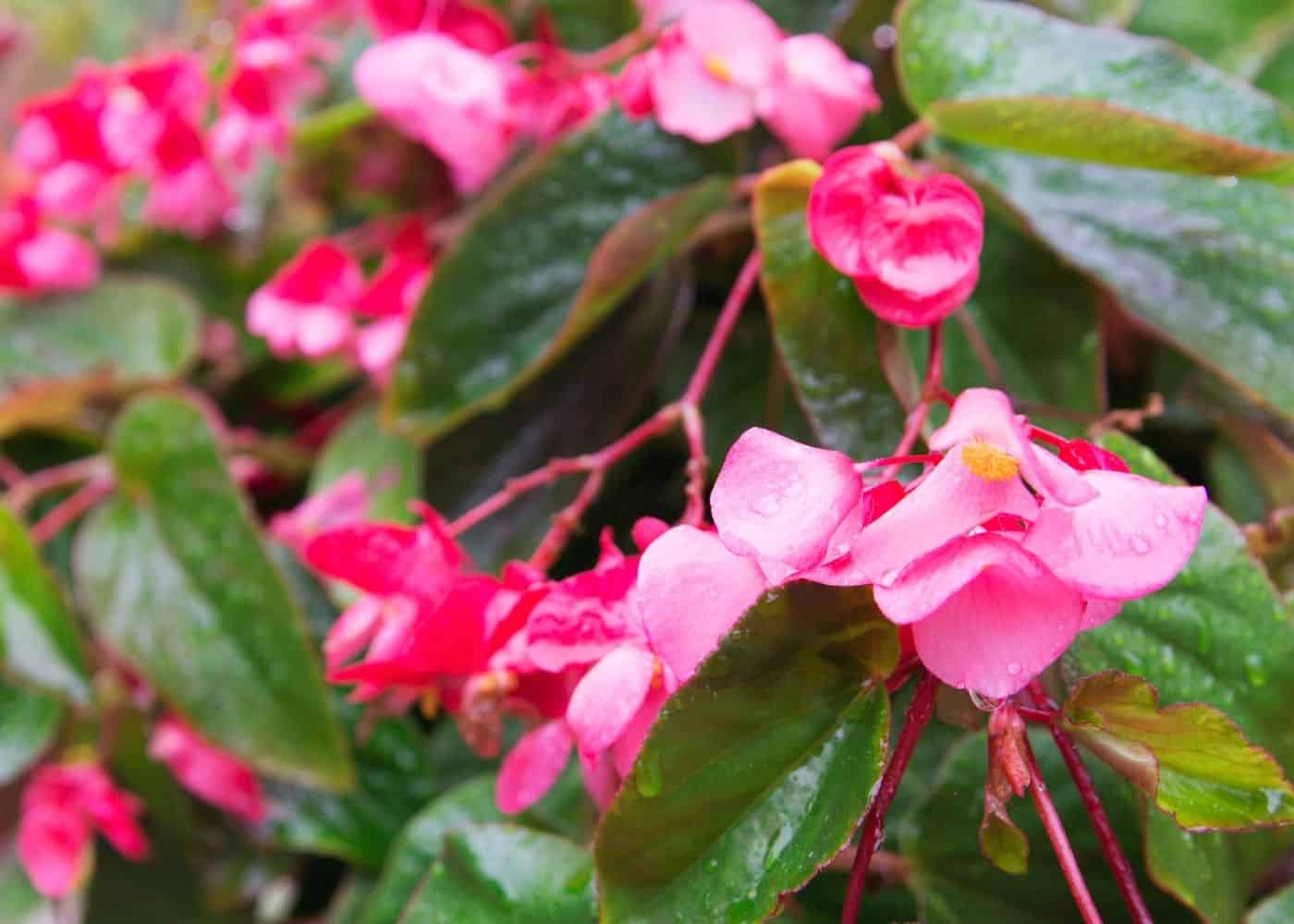
Dragon Wing begonia plant care guide
Dragon Wing begonias are extremely easy to care for, making them perfect beginner plants for novice gardeners.
Watering Dragon Wing begonia
Dragon Wing begonias prefer moist soil. However, make sure you avoid overwatering your plant. Dargon Wing begonias can tolerate their soil drying out a bit between waterings, so don’t worry if you forget every so often. Another thing to remember is that Dragon Wing begonias can drop their leaves if the plant is overwatered. So, before you water your plant, check the first few inches of soil. If they’re dry, go ahead and water. If not, wait a few days and check again.
Light requirements for Dragon Wing begonia
Dragon Wing begonias thrive with medium to bright, indirect, filtered light. Therefore, it’s best not to place your plant in direct sunlight as it can burn the leaves. In addition, They can withstand partial shade, especially if planted outdoors. However, these plants can become “leggy” or thin-looking if they aren’t getting enough light. So, make sure to provide your plants with at least partial shade, with the best option being bright, indirect sunlight.
Fertilizer for Dragon Wing begonia
Spring and summer is the active growing season for Dragon Wing Begonias. So, you can fertilize your plant with a diluted liquid organic fertilizer every couple of weeks during this time to keep the plant healthy. When fall and winter roll around, you can fertilize your plant once a month. When fertilizing your plant, one thing to keep in mind is to keep your soil moist. If the plant’s soil isn’t moist enough, your plant may get fertilizer burn.
Humidity & temperature for Dragon Wing begonia
Since Dragon Wing Begonias are tropical plants, they require around 50-60% humidity levels. If your home is dry, you can get a humidifier to maintain adequate humidity levels. Yet, you want to avoid misting your plant’s leaves because it can lead to fungal issues. In addition, Dragon Wing Begonias should have good airflow and ventilation to minimize problems with pests and disease.
When it comes to temperature requirements, Dragon Wing Begonias require around 60-75 degrees Fahrenheit. Since these plants are tropical, they do not tolerate the cold. So, if you plan on keeping your plant outdoors, you need to bring it in during the winter. In addition, these plants require consistent temperatures. So, try to avoid placing your plant in a drafty area if keeping your plant indoors.
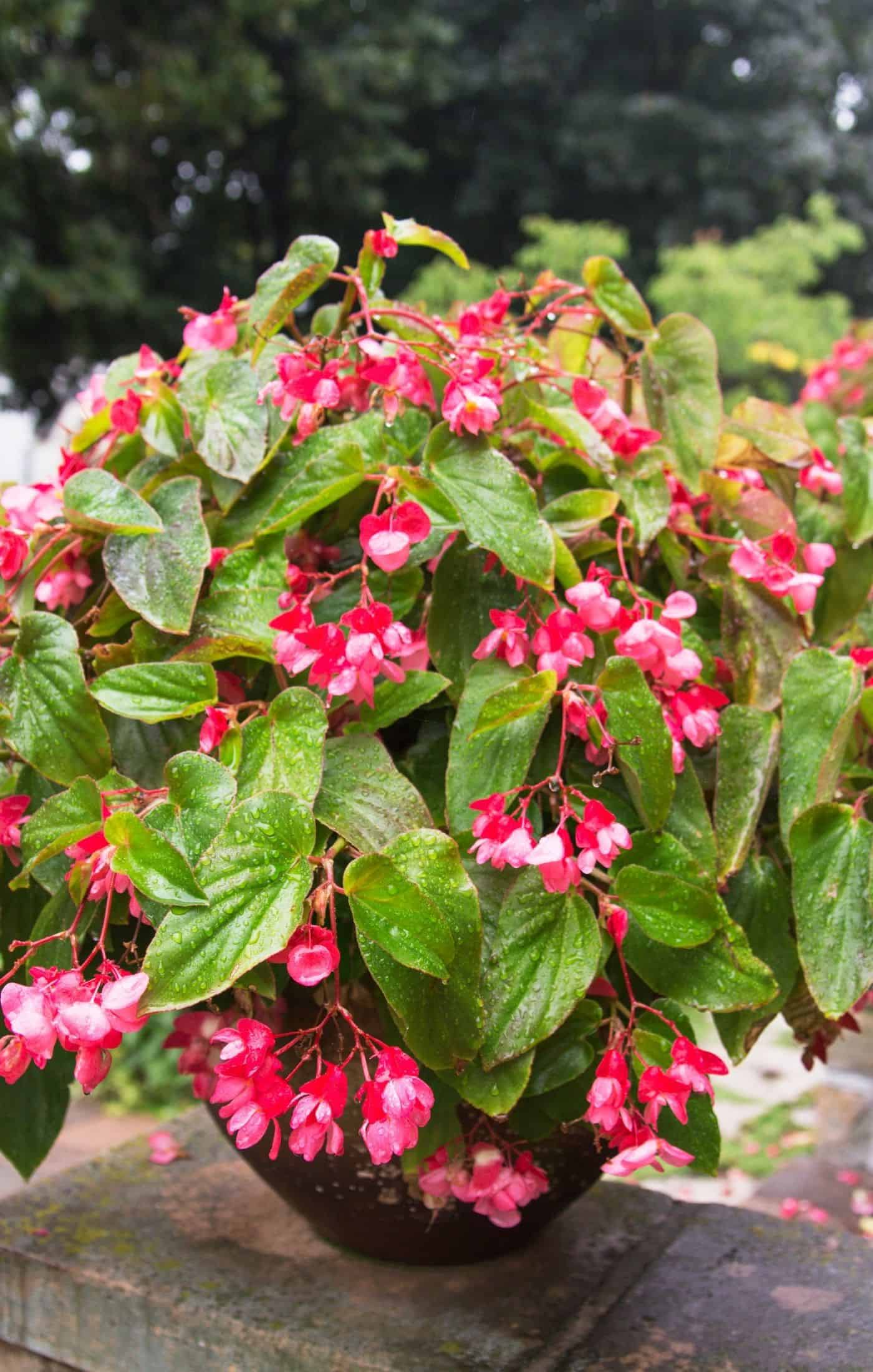
Repotting Dragon Wing begonia
Since Dragon Wing Begonias have fibrous roots, they thrive being rootbound. So, when you repot your plant every year or two in the spring, only use a pot that is one size larger.
Potting soil for Dragon Wing begonia
Dragon Wing Begonias thrive with moist, well-draining potting soil. So, you want to look for potting soil consisting of loam or sand as these promote drainage. In addition, Dragon Wing Begonias prefer neutral or acidic soil. If you want to be particular, you can measure the soil’s pH every so often.
Planter pots for Dragon Wing begonia
Dragon Wing Begonias need plenty of drainages so a pot with large draining holes is best for these plants. In addition, these plants look amazing when you plant them in hanging pots. The best pots for Dragon Wing Begonias are plastic or clay terracotta pots. Plastic pots retain moisture more easily, so try to avoid overwatering if using a plastic pot. On the other hand, clay terracotta pots keep the soil drier, making them a wonderful breathable option for Dragon Wing Begonias.
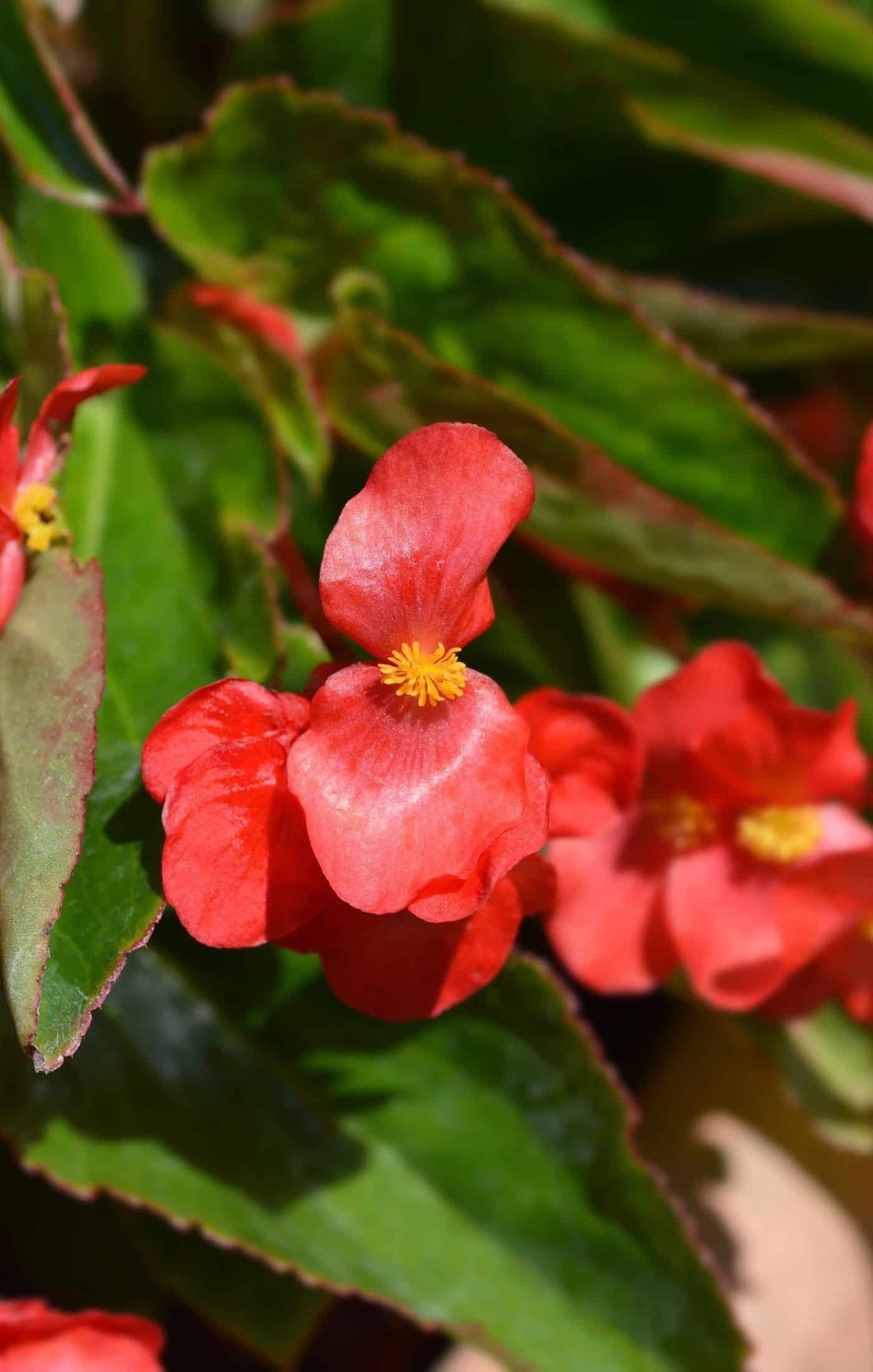
Common pests affecting Dragon Wing begonia
The common pests that affect Dragon Wing Begonias include aphids, thrips, spider mites, and whiteflies. These pests suck the juices from the plant’s leaves and tend to hide on the underside of leaves. As a result, the plant’s leaves will start to wilt and dry up. In addition, your plant’s leaves may look or feel sticky due to the pests removing the sap from the leaves.
If you think any of these pests have attacked your plant, quarantine the plant. Then, use an organic insecticide and spray the plant’s leaves to kill the pests. Remove any leaves that are extremely damaged or dead and throw them away.
Common diseases affecting Dragon Wing begonia
The most common disease affecting Dragon Wing Begonias is gray mold. Gray mold can occur due to a cool, damp, or stale environment. First, move the plant to a well-ventilated area with good airflow to eradicate gray mold. Then, treat with an organic fungicide like copper. Lastly, try not to splash water on the leaves when watering.
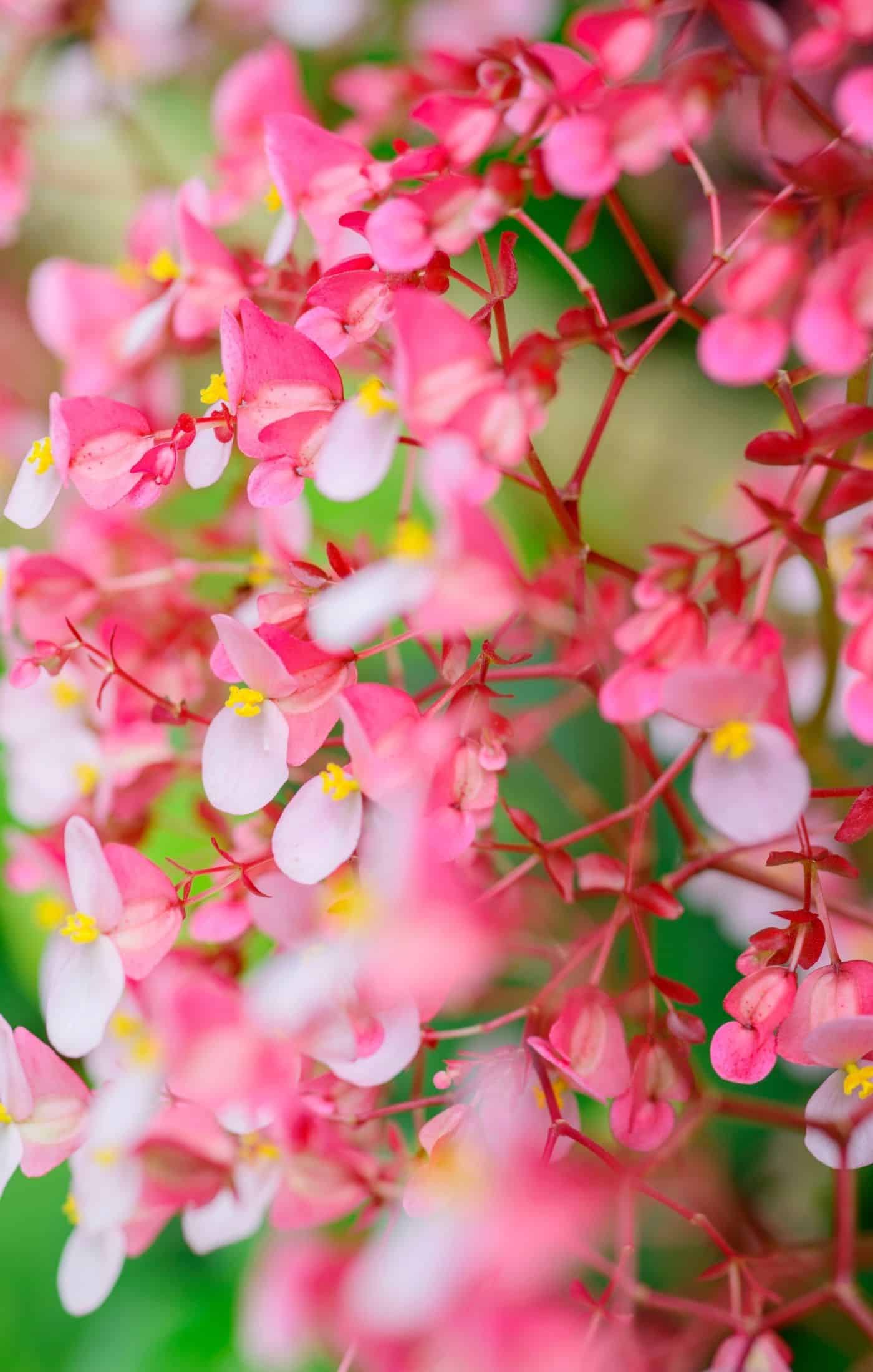
Propagating begonias
Begonias are extremely easy to propagate with stem cuttings or root division. To propagate your plant with stem cuttings:
- Use clean, sterile scissors and cut one or more 3-4 inch sections off your plant’s stems. Make sure each of these cuttings has a node to develop roots.
- Cut right below the node to allow nutrients to flow through the cutting.
- Dip the tips of reach cutting in rooting hormone to aid in root development.
- Plant the cuttings in moist potting soil and water thoroughly.
- Keep the cuttings out of direct sunlight, so they don’t burn.
To propagate your plant with root division:
- Carefully remove the mother plant from the pot and brush off the roots.
- Using a sharp, sterile knife, divide the root ball into sections (this depends on how many plants you want). Make sure each section contains a portion of the mother plant and a few roots.
- Plant the sections into pots with moist soil and water thoroughly. Place in an area with bright, indirect light.


